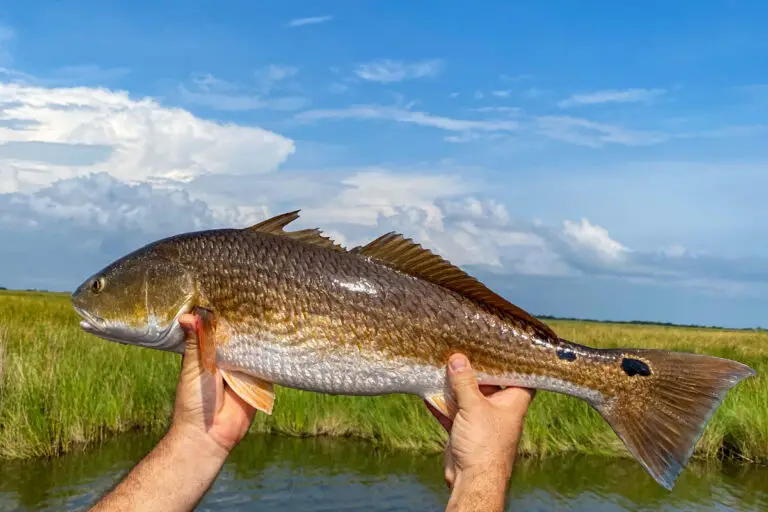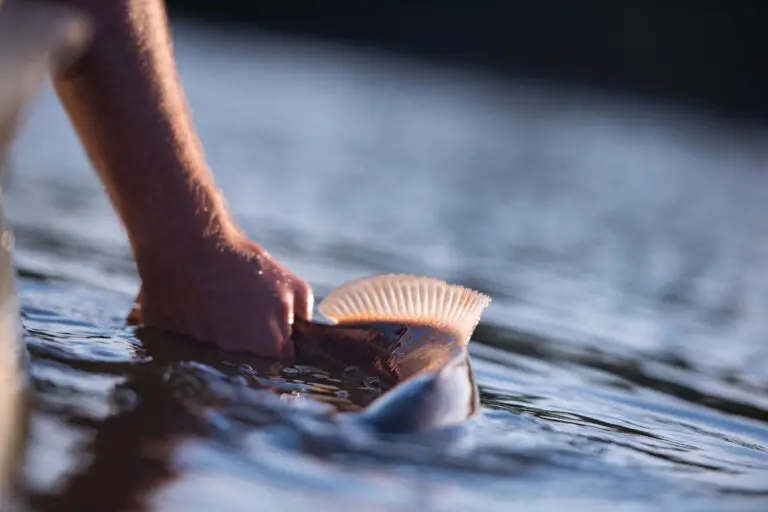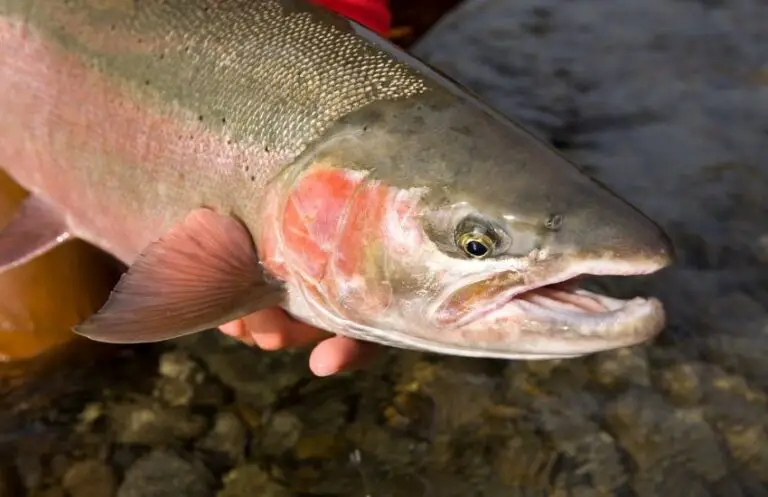Senko Wacky Rig: Top 5 Quick and Simple Ways to Set Up and Fish
Can wacky rigging a Senko worm step up your game?
Senko worms can be utilized in a variety of ways when used with a wacky rig. It’s flexible enough to present horizontally or vertically in the water column, which gives the angler several possibilities.
In this post, you’ll learn how to rig a weightless Senko, Texas rigged Senko, Carolina rigging Senko, drop shot Senko, and Neko rig.
Discover how to construct and utilize these Senko bait rigs for the ideal bait for your next fishing adventure.
Let’s get started.
What Is A Senko Worm?
Senko is a soft plastic worm that comes in a variety of colors and sizes. Some of the most popular include Senko color green pumpkin, watermelon seed, black/blue flake, and Texas brown craw.
The Gary Yamamoto-designed Senko is the most popular worm for a wacky setup. These lures range in size from three to seven inches. The usual lengths are usually four or five inches long.
Stick Baits are one of the most popular soft plastic worms. These lures are another alternative for fishing wacky. The Senko, on the other hand, is clearly the most popular wacky worm because it produces a sluggish, fluttering action as it sinks in deep water that bass find irresistible!

How To Wacky Rig A Senko
A wacky rig consists simply of a “wacky worm” impaled on a hook point through the middle of its body. This fishing technique is easy to do and has a high success rate.
In its most basic form, wacky rigging is attaching a Senko or soft plastic stick worm directly in the middle with a wacky hook.
There is a fluttering motion of each end of the worm as the bait falls in the water is what makes it so appealing to bass.
Typically fished weightlessly or using a small jig head.
A popular approach to place a hook point directly in the middle of the worm without having to puncture it is to utilize an o-ring. An o-ring is a rubber band that holds the hook to the worm.
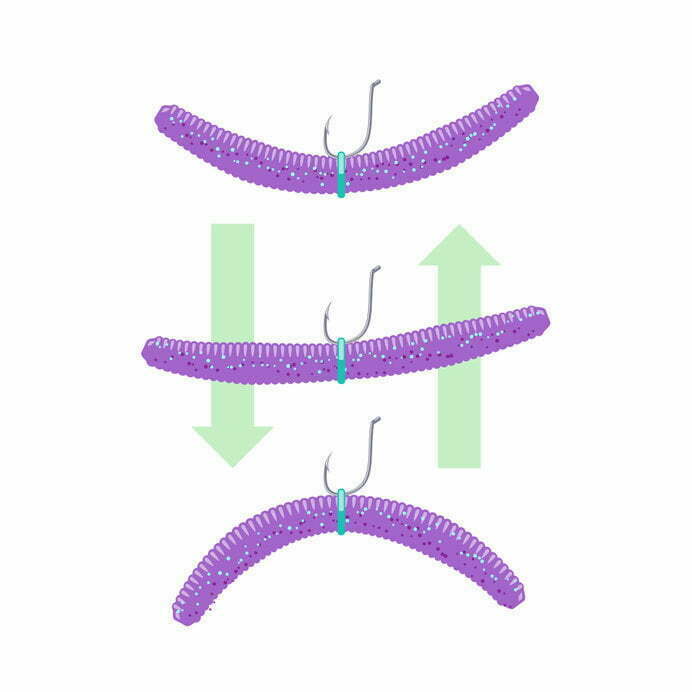
How To Fish A Senko Wacky Rigged
There are several reasons for a bass angler to fish a wacky rigged Senko. The bait sinks as a result of this approach. It works by making a worm sink faster through the water column.
This is great because it’s easy to get your worm into the strike zone. And it excels when fishing in brush and wooded cover where the bass is holding.
The best-proven method to fish a Senko wacky style is to flip and pitch in and around boat docks and deep structure. You also want to cast and slow-roll around rocky banks, drop-offs, deep grassy flats, wood cover, and other types of sparse cover.
Follow the bait with your rod tip and keep a semi-slack line as you retrieve the rig. You can even use different Senko lengths for different techniques (i.e., flipping, pitching, drop shotting).

Best Wacky Rig Hooks
- Wacky hooks. Because of the wider gap and sharp inward angle that allows for improved lip hookups, this is the most popular hook.
- Weedless hooking. Use a weed guard hook to protect your worm from snags on the bottom. All hook variations are available with a weed guard hook. The benefits are snag-free presentations. But, the downside is you will miss some hits occasionally, but well worth it.
- Jig hook and weighted hooks. Great for a nose-down presentation at the bottom of the water column. Use a lighter weight to slow the descent. You still insert the hook in the middle of the Senko wacky style for maximum flopping action.
- Offset extra-wide gap (EWG) hooks. Senko fishing with Texas-style wacky rigs is ideal. Simply middle hooking a Senko with the EWG hook to complete the ridiculous action!
Recommended Wacky Rig Hooks
O-Ring Benefits To Secure A Wacky Hook to a Worm
The o-ring is a rubber band that encircles the worm to keep the hook in position.
There are a few advantages to using an o-ring on your setup:
- Secure your worms to the hook without worrying about damaging them.
- An o-ring makes the worm easier to flip and skip, resulting in more bites.
Recommended O-Rings for Wacky Rig
Types Of Wacky Rigging That Work Great For Senkos
The main advantage of wacky rig fishing to catch bass is to produce a fluttering action to attract the attention of tight-lipped fish hidden in cover and around structure. The Senko was created with this in mind, so let’s keep that in mind when rigging.
The following are five rigs that would be excellent for this technique:
- Weightless Wacky Rigged Senko
- Wacky drop shot rig
- Wacky style Carolina rig
- Texas-rigged Senko Wacky Style
- Wacky rigging a Neko Rig

What Is A Weedless Senko Wacky Rig?
Soft plastic worms like the Senko are great bait for weedless hooks. The Senko hook approach has several advantages over the standard hook technique, including the ability to catch fish in places where the grass is thick and heavy.
You can also utilize a variety of weedless hook designs for a wide range of rig configurations, including the weedless variations of the EWG hook, offset EWG hook, jig hook, and wacky hook.
You simply insert the weedless hook through the middle of this soft plastic worm.
Fishing With A Weedless Senko Rig
The best place to catch fish with a Senko with a weedless rig is around thick grass, pads, and other aquatic vegetation.
This is where bass usually hold, so casting into these types of structure is the best way to fish this approach.
The weedless EWG hook excels when fishing in heavy cover where you need to hold the bait off of the bottom. The jig hook does well at getting bites through grass and other types of light covering, while a Texas rigged offset EWG hook is best suited for thick weeds or heavier structure like logs and brush piles. You want to cast your Senko near the grass cover and slowly crawl it back through the vegetation. This will catch any bass within range.
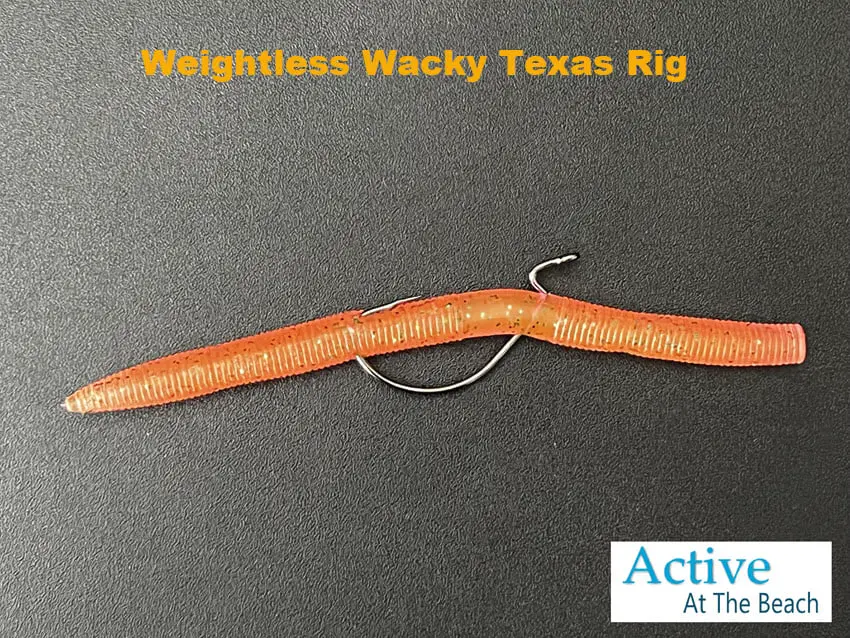
Weightless Wacky Rigged Senko
A weightless wacky rig is the simplest way to fish a wacky rig Senko, and it doesn’t require much fancy knot tying or rigging knowledge. It is the standard wacky rig. The only unique piece of equipment you’ll need is an o-ring.
Weightless Senko fishing is great for bass fishing because it allows the Senko to fall and flutter slower in the water column and imitate a dying baitfish better. This method works best when there’s less current, deeper water, and no cover around.
Casting and pitching are done with just the weight of the worm and hook. You give it a slight twitch to create some movement.
Weightless Wacky Rig Parts List
- Senko wacky worm
- O-ring
- Wacky hook
Steps To Setup A Weightless Wacky Rig Senko
- Tie the mainline to the wacky hook using an “Improved Clinch” knot.
- Thread the o-ring halfway down the body of the worm using a wacky rigging tool.
- Insert the hook between the o-ring and the worm.

How To Wacky Rig A Neko Rig
This wacky rig combination is a great alternative to the standard rig. The worm dives nose first, as usual, but with a long fluttering tail that gives the bait the appearance of being injured.
You start with the basic Neko rig, which includes a weight attached to the head or tail of the worm.
The nail weight causes a diving motion at one end with the wacky hook in the worm middle, resulting in fluttering at the other.
Wacky Neko Rig Part List
- Nail weight
- Senko wacky worm
- O-ring
- Wacky hook
Steps To Setup A Neko Wacky Rig Senko
- Tie the mainline to the wacky hook using an “Improved Clinch” knot.
- Thread the o-ring halfway down the body of the worm using a wacky rigging tool.
- Insert the hook between the o-ring and the worm.
Recommended Nail Weights For Wacky Neko Rigs
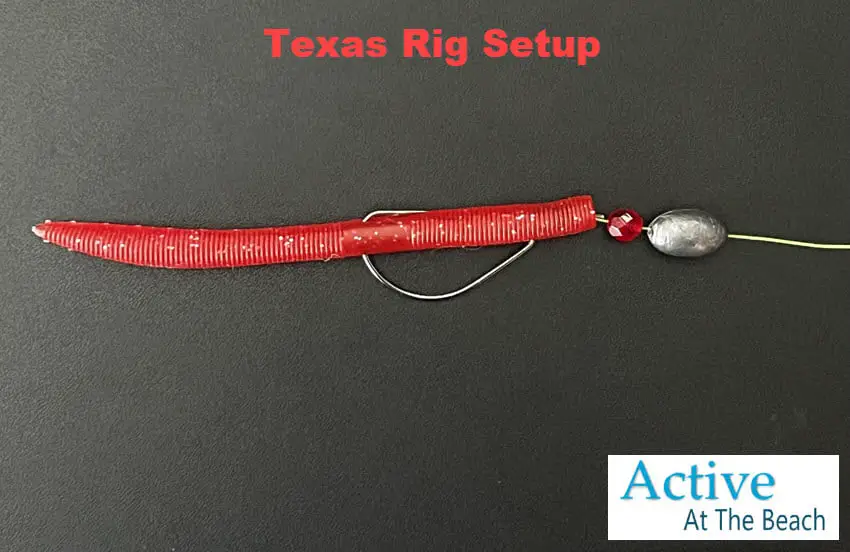
How To Wacky Rig A Texas Rig With A Senko
Texas-style wacky-rigs work well for Senko fishing. The idea behind Texas rigging a Senko is to allow it to tail up and bounce vertically in the water column.
Putting weight in the front and simply inserting the hook through the middle of a worm causes it to flutter at each end, enticing more bites for bass fishing.
Weightless wacky rig Senko fishing is also popular with Texas rigging. The weightless rig on a Texas rig is typically fished the same as a traditional Texas weighted rig, with one exception: the lengthier Senko allows it to flutter back down after being bounced off of the structure instead of nose first.
Wacky Texas Rigged Senko Parts List
- Senko wacky worm
- Offset wacky rig hook (weedless or standard)
- Swivel
- Bead
- Bullet weight
- 12 – 16 inch leader line
Steps To Setup A Wacky Texas Rig Senko
- Rig a standard Texas rig. Tie the mainline to one end of the swivel to prevent line twists using an “Improved Clinch” knot.
- Tie the leader line from the other end of the swivel using a second “Improved Clinch” knot.
- Thread the bullet weight and bead next.
- Tie the other end of the leader to the offset EWG hook using a third “Improved Clinch” knot.
- Thread the offset hook Texas-style along the middle of the worm body.
Read more about rigging a tying a Texas rig here.
Wacky Style Carolina Rig
Carolina Rig is a fantastic technique to fish a Senko on heavier lines with sturdier rods. It’s ideal for fishing rocky or hard bottom, but it can also be used on any sort of cover – anywhere there’s structure and some current.
The same principles apply to fishing a Carolina rig with a Wacky Senko as they do to any Carolina rig. Shake the end of your rod once you’ve completed your cast and its subsurface to make the Senko tail vibrate, then swim just above the bottom of your planned fishing hole.
Click here to read about the Carolina rig in further detail.
You’ll learn how to rope up the rig, and choose the correct hook, line, weight, and bait. I’ll also go over which fishing rod and reel are best for this sort of fishing as well as some additional essential information to help you get the most out of it. Finally, I’ll show you how to fish it.
Wacky Carolina Rig Parts List
- Senko wacky worm
- Bead
- Swivel
- Carolina rig weight
- O-ring
- Wacky hook
- 12 – 16 inch leader line
Steps To Setup A Carolina Wacky Rig Senko
- Rig a standard Carolina rig.
- Thread the bullet weight and bead through the end of the mainline.
- Knot tie the mainline to one end of the swivel to prevent line twists using an “Improved Clinch” knot. The weight and bead should be able to slide back and forth on the mainline.
- Tie the leader line from the other end of the swivel using a second “Improved Clinch” knot.
- Tie the other end of the leader to the wacky hook using a third “Improved Clinch” knot.
- Thread the o-ring halfway down the body of the worm using a wacky rigging tool.
- Insert the hook between the o-ring and the worm.
Recommended Carolina Rig Barrel Weight
Wacky Drop Shot Rig
This is probably the most popular way to rig a Senko wacky style. It can be fished vertically or horizontally.
The idea behind this rig is that you tie the hook on with an o-ring around the eye of your hook so you don’t have to puncture the worm.
When fished vertically you will want a heavier weight, usually a 1/4 oz or even a 1/2 ounce sinker. When fished horizontally you can use a lighter weight and go down to about an 8th of an ounce.
Wacky Drop Shot Rig Parts List
- Senko wacky worm
- Swivel
- Bell weight or drop shot weight
- O-ring
- Wacky hook
- 12 – 16 inch leader line
Steps To Setup A Drop Shot Wacky Rig Senko
- Rig a standard drop shot rig.
- Tie the mainline to one end of the swivel to prevent line twists using an “Improved Clinch” knot.
- Knot tie the leader line from the other end of the swivel using a second “Improved Clinch” knot.
- Tie the wacky hook to the middle of the leader line using an “egg loop” knot.
- Secure the other end of the leader to the weight using a third “Improved Clinch” knot.
- Thread the o-ring halfway down the body of the worm using a wacky rigging tool.
- Insert the hook between the o-ring and the worm.
How To Fish A Wacky Rig For Bass
In this video from Monster Bass, we’ll show you how to fish a wacky rig for bass. For beginner to advanced bass anglers looking for tips.
Best Line For Wacky Rigs
One of the most critical decisions when constructing your fishing rig is selecting the right fishing line.
For a spinning outfit, I choose a braided line. It has no line memory, so you can cast further and have fewer line twists. When casting into heavy vegetation or boulders, I use a longer fluorocarbon mainline because it is abrasion-resistant and less visible in shallow and clear waters.
Because I want to cast for longer distances with soft plastics and other lures, I prefer to use braid as my bait casters’ mainline. For live bait rigs, I can make shorter casts without frightening the fish, so I prefer a fluorocarbon mainline that is less abrasive.
- Braided Line: 15 lbs for the mainline since it is easier to handle on a baitcaster and 10 lbs for a spinning reel to cast further without the worry of wind knots.
- Fluorocarbon: 20 lbs for abrasion protection around structures or many rocks, and still sensitive to small bites.
How To Tie Knots For A Wacky Rig
How To Tie The Improved Clinch Knot
The improved clinch knot, sometimes known as the “fisherman’s knot,” is a useful method for fastening hooks and leaders. Learn how to tie the improved clinch knot here.
How To Tie An Egg Loop Knot
This knot allows you to change out the weight or other components for adaptability. Learn how to tie the egg uni knot here:
How To Tie A Double Uni Knot
The double uni knot is one of the best knots for tying a monofilament or fluorocarbon to braid directly. Learn how to tie the double uni knot here.
Wacky Rigging Tool
I recommend using a wacky rig tool to add an o-ring and hook to a Senko or stick worm. Connecting your hook to a worm using an o-ring is considerably easier with the use of a handy wacky rig o-ring tool.
A quick and simple way to make a wacky rig, securely attach o-rings to plastic worms in any position you desire. Easily rig all your plastic, Senko, soft, stick baits with wacky tools.
Recommended Wacky Rigging Tools
Frequently Asked Questions
Do You Use A Weight With A Wacky Rig?
A wacky rig is typically weightless, but you may add a nail weight to the worm head to create a Neko worm wacky appearance.
What’s The Best Hook For A Wacky Rig?
A 1/0 to 2/0 finesse wide gap hook is perfect for landing the best hookups with a wacky rig. A weedless EWG hook works best when fishing in heavy cover.
What Is The Best Senko Color?
Wacky Senko rigs tend to perform better with natural hues like green pumpkins, chartreuses, browns, and watermelon seeds (a darker red color). In clear water and bright overhead skies, lighter color patterns with contrasting speckles are more effective. Dark patterns work better in low light conditions, overcast days, and murkier waters.
Conclusion
Water depth and clarity, as well as fishing in cover or open water, will influence the wacky setups you choose when fishing from a boat or shore.
So I came up with five strong choices for Senko worm wacky setups, each with its own advantages:
- Weightless Wacky Rigged Senko
- Wacky drop shot rig
- Wacky style Carolina rig
- Texas-rigged Senko Wacky Style
- Wacky rigging a Neko Rig
Now you’ve learned how they’re built and fished, as well as the tools and instructional how-tos that will enable you to catch more bass.
I hope this article has helped you find a few new ideas to try out next time you head out on the river or the local lake.




